
Hello friends. Our trip to Mérida, Spain was very enjoyable. It's important to emphasize that this is the one in Spain, because there's also a Mérida in Mexico, which was named after this city. As you know it's become a tradition for me to start my trips from the main square and this time, we began our tour from the city's central square right at noon. We were eager to discover what we could see in this city in one day. I was sure it would be fascinating, because this is not just a beautiful city. It's also a concentrated piece of Roman Empire history.
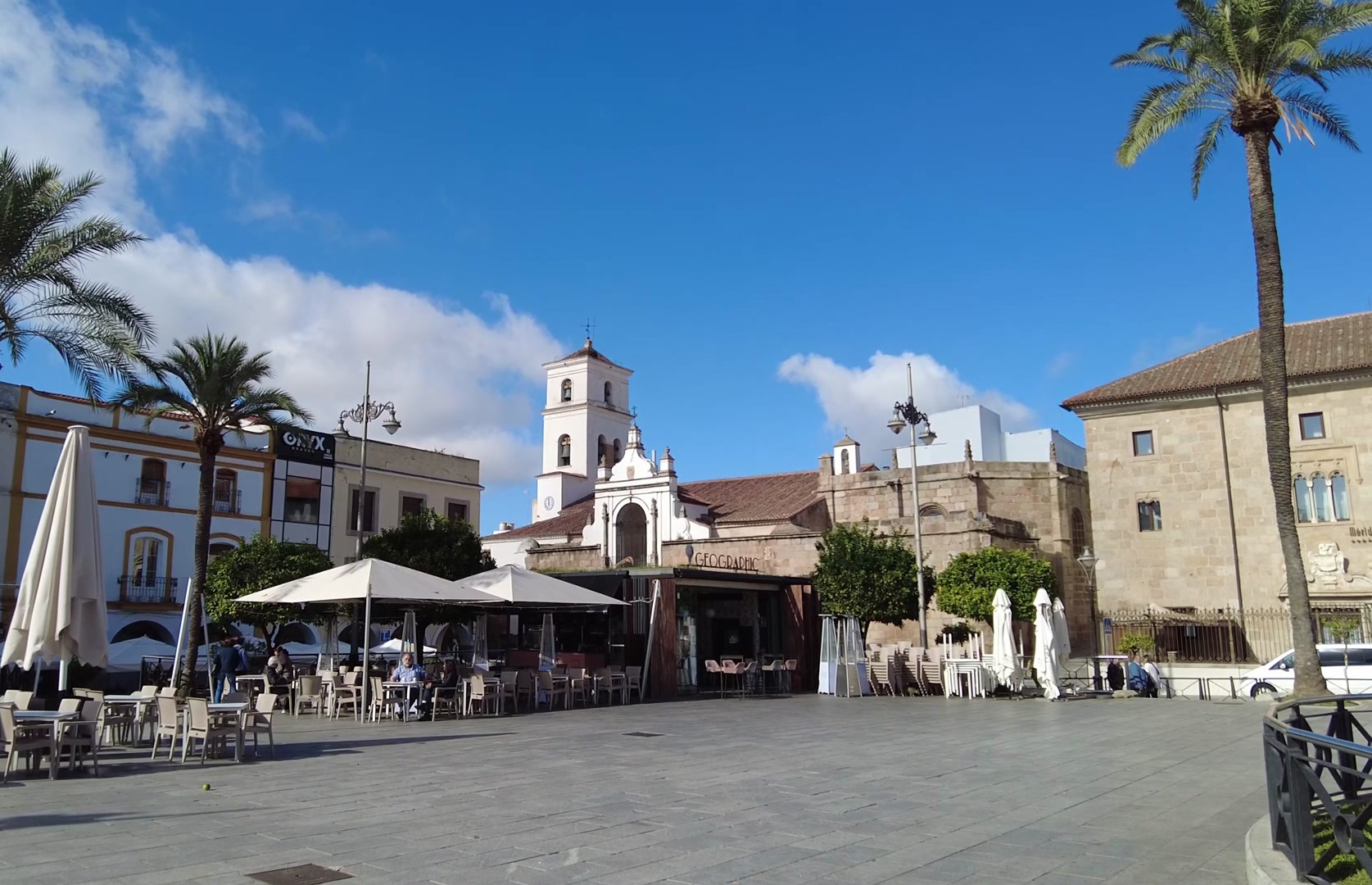
Mérida was the capital of Lusitania, the westernmost province of the Roman Empire and there are many ruins from this period here. The city was founded in 25 bc. The square we were in was not Plaza Mayor, but Plaza de España. In Spain sometimes the main square is not called Plaza Mayor but goes by another name. This is a lovely place, with buildings from different periods, but there are no remains from the Roman era. The hotel I stayed in near the square was quite nice. It was called Merida Palace and apparently used to be a palace. The hotel is generally of high quality with a traditional patio and in fact, there are multiple patios. However, there were a few small issues.



Although my room was spacious, its window only opened into an inner hallway, so I could only tell what the weather was like when I went outside. As for the decor, everything was beautifully done in a traditional style. But some details bothered me a bit. For example, there was an issue with opening the last door of the wardrobe. These kinds of design flaws are usually made by inexperienced designers or perhaps the original plan was for sliding doors, but later they decided to use hinged ones. The headboard of the bed was slightly off-center, but overall it was comfortable. The bathroom was quite spacious and airy, decorated in a style that interpreted Roman medallions with mosaics. We paid 88 Euros for a one-night stay.







After the square, we went to see the ancient Roman ruins and remains.





Mérida is located on the banks of the powerful Guadiana river. The Romans built a very well-preserved Roman bridge over the Guadiana. Thanks to Roman engineering skills, this bridge is about 800 meters long and consists of 22 arches. The city was connected by roads that passed over this bridge. However, to protect the city from enemies and to ensure that only those with good intentions could enter, a fortress was built. First there was a Roman fortress, then additional structures were added during the Visigoth period and later, when the Moors arrived, they built an Alcazaba here. This structure has been quite well preserved, but it can't be said to be architecturally impressive.


While walking along the Guadiana River, it's possible to see the grandeur of the Roman bridge. Mérida, when it was first founded, was not known by its current name. Since it was established during the reign of Emperor Augustus, the city was named Emerita Augusta in Latin. Interestingly Mérida still maintains its capital status today and serves as the capital of the Extremadura region. On the opposite side of the river, there is a modern building, the Extremadura Regional Council (Junta de Extremadura). This building was also constructed in an interesting way. During the excavation work Roman remains were discovered, so the building was constructed on columns, preserving the Roman ruins beneath it.



Mérida is a city where many modern buildings are built on top of Roman-era ruins. For example, the other day I passed by a cultural center and the ground floor of the building was entirely made up of these ruins. I also had a meal at a restaurant called Ambiyans, where the floor was made of glass, allowing us to see the Roman ruins beneath. This was quite an impressive experience. It was possible to feel surrounded by history while sitting in a modern environment and eating.

Although the restaurant is listed in the Michelin Guide, it didn't fully impress me. Some dishes were quite successful, but the overall presentation and decor did not meet expectations. Still I would recommend trying it for those interested, as the locals also ordered from the menu in a similar way.


Back at Plaza de España, there are two noteworthy architectural structures: the Santa María de la Asunción Church. This church is from the 13th century and its historical background is quite interesting, as many churches from this period exist in Spain. After the Reconquista the locals began rebuilding the places that had been destroyed. The second clock on top of Mérida's town hall is part of this building. The modern-looking building is the regional council building, while the town hall is the city's local government center.


Another important structure is the Temple of Diana. This temple was part of the Roman forum, surrounded by a modern concrete structure that reflects the geometric order and volume of the forum. The temple was started in the 1st or 2nd century AD and was used by the Romans until the 5th century. After the fall of the Roman Empire, the Visigoths came and adapted the temple for their own needs. Later when the Moors arrived, they modified it and used it as the governor's palace. After the Reconquista, in the 10th century, the Los Corbos family took ownership of it. However, this structure didn't pass into state ownership or become recognized as a monument until 1972.




Mérida like many other Spanish cities on the UNESCO World Heritage List, draws attention for its historical significance. A few steps from the Temple of Diana, the ruins of the Roman Forum can be found. According to some sources, most of the stones we see here are actually replicas, with the original stones preserved at the Roman History Museum, which is quite close to the city.
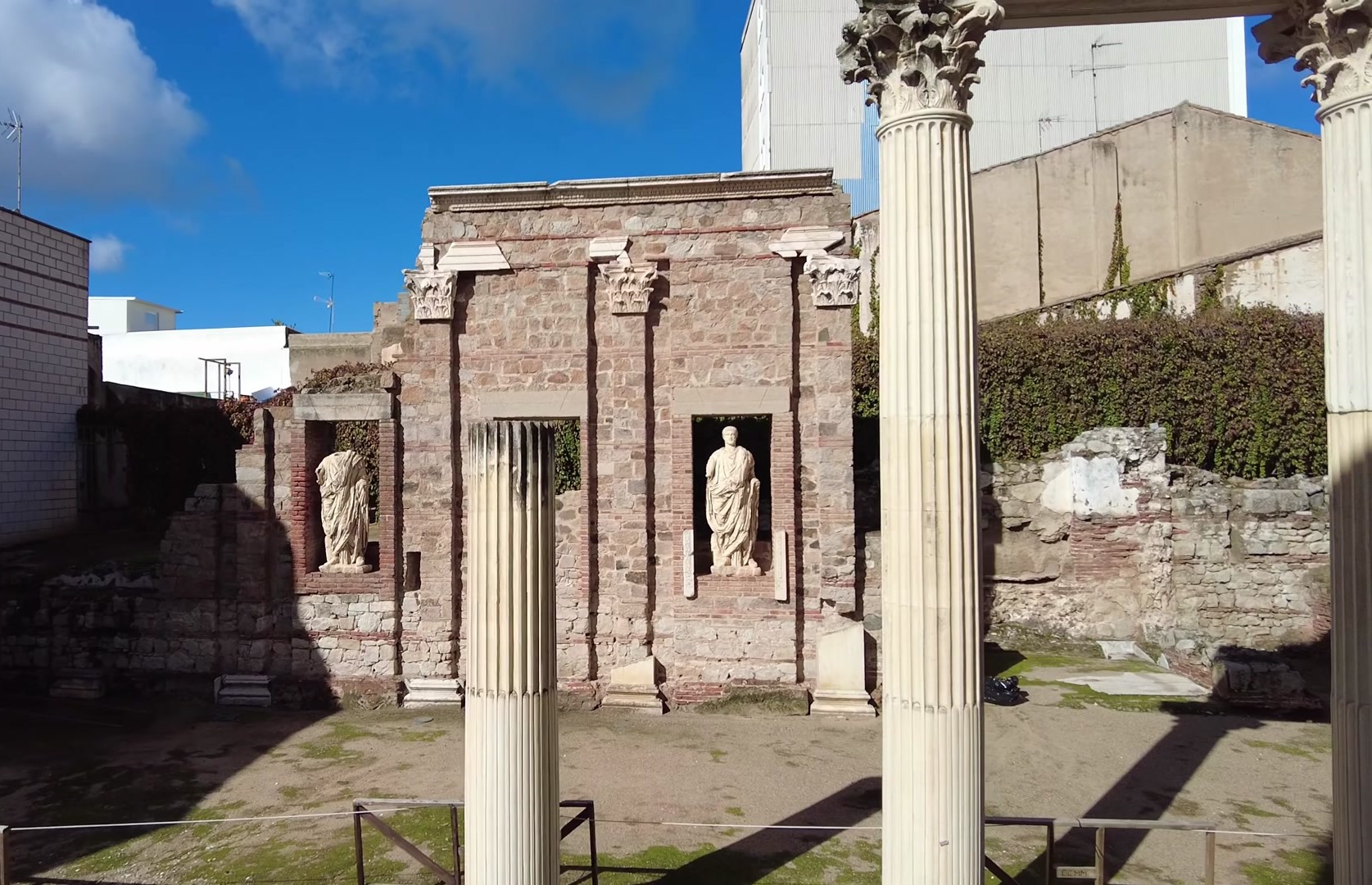




One of Mérida's most striking structures is its theater. This well-preserved theater was built in the 1st century AD, but underwent some changes between 340-390 ad. With a capacity of 6.000 people, the theater was used not only for plays but also for city meetings and religious ceremonies. Processions entering through the theater's entrance gates would pass by this impressive colonnade.

At the bottom of the colonnade, there were statues and paintings of the imperial family, while the upper part featured statues and depictions of gods. This arrangement emphasized the emperor's connection with the gods and his position in the hierarchy. Similarly the hierarchy within the imperial family was reflected in these depictions, with the most important individuals placed centrally and lower-ranking family members at the edges.

Some of the seating in the theater has been restored. This is an important effort to preserve the aesthetics of the ancient period and help visitors feel the atmosphere of the past.

This theater is still actively used today, hosting events such as the annual Classical theater festival. An interesting detail is that the theater's tribunes or boxes were reserved for sponsors who financed the performances. Sponsors played an important role in organizing the theater shows.

Another remarkable feature is the material used to build the columns. These columns were made from Portuguese marble, extracted from the region of Lusitania, which is now within Portugal's borders. This marble, sourced from quarries in the Extremadura region, has a distinctive appearance.






The courtyard behind the stage was not an ordinary backstage area but was used for religious ceremonies. In the middle of this courtyard, there was a well and prayers were made around it. There was also a gallery or arch in this area, decorated with marble floors and frescoes. However, no traces of these decorations remain today.
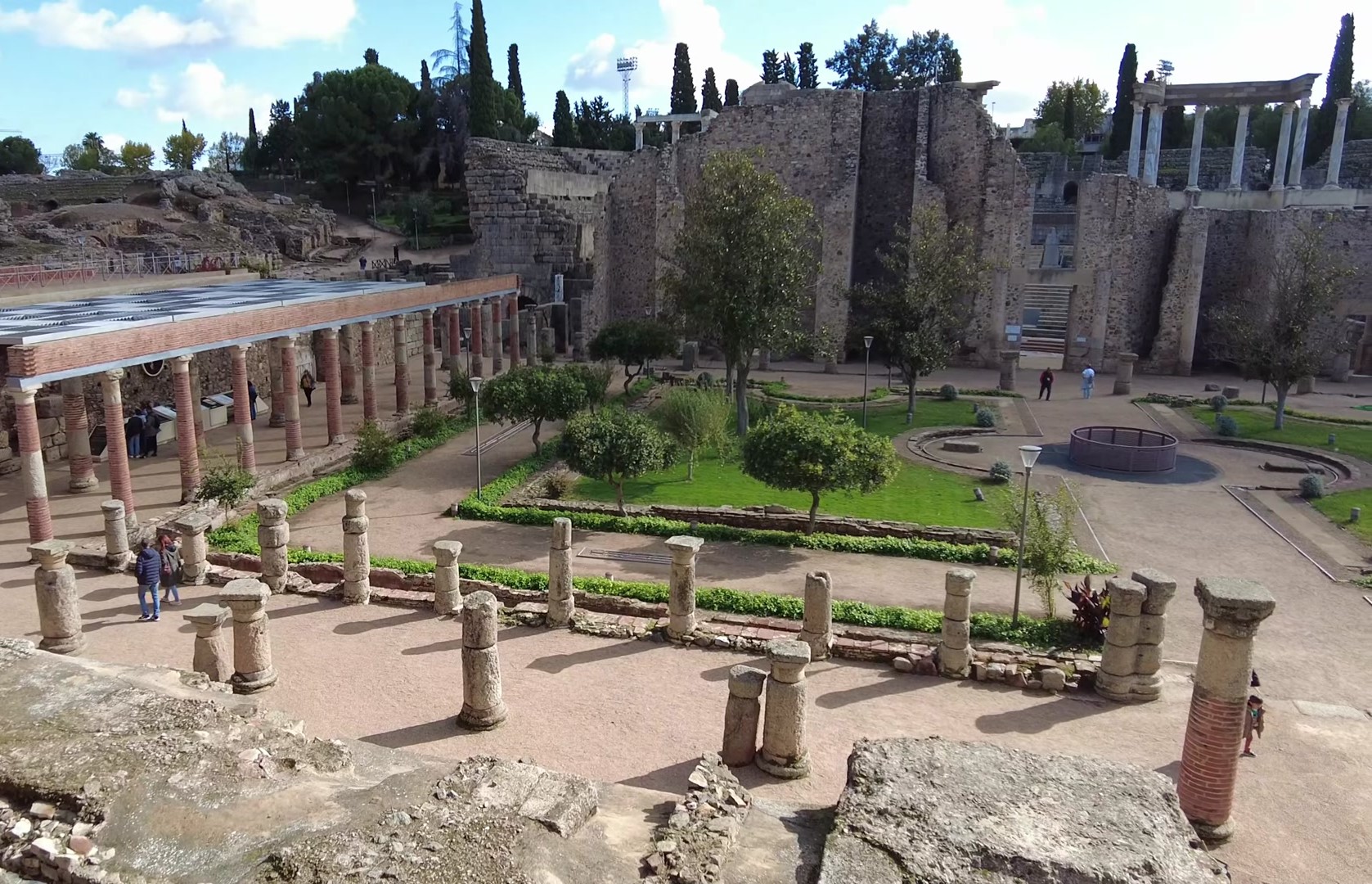

Excavation work at the theater began in the 20th century and much of the structure was found buried about 8 meters underground. After the fall of the Roman Empire, the theater ceased to be used. The Visigoths, Arabs and later the local peasants did not use the structure. The founder of Mérida was a Roman leader, the nephew of Emperor Augustus, as stated in many writings. In fact Augustus is not a name but a title. The emperor's full name was Gaius Julius Caesar Augustus and this title became part of his full name. This detail is an important aspect of Roman history.
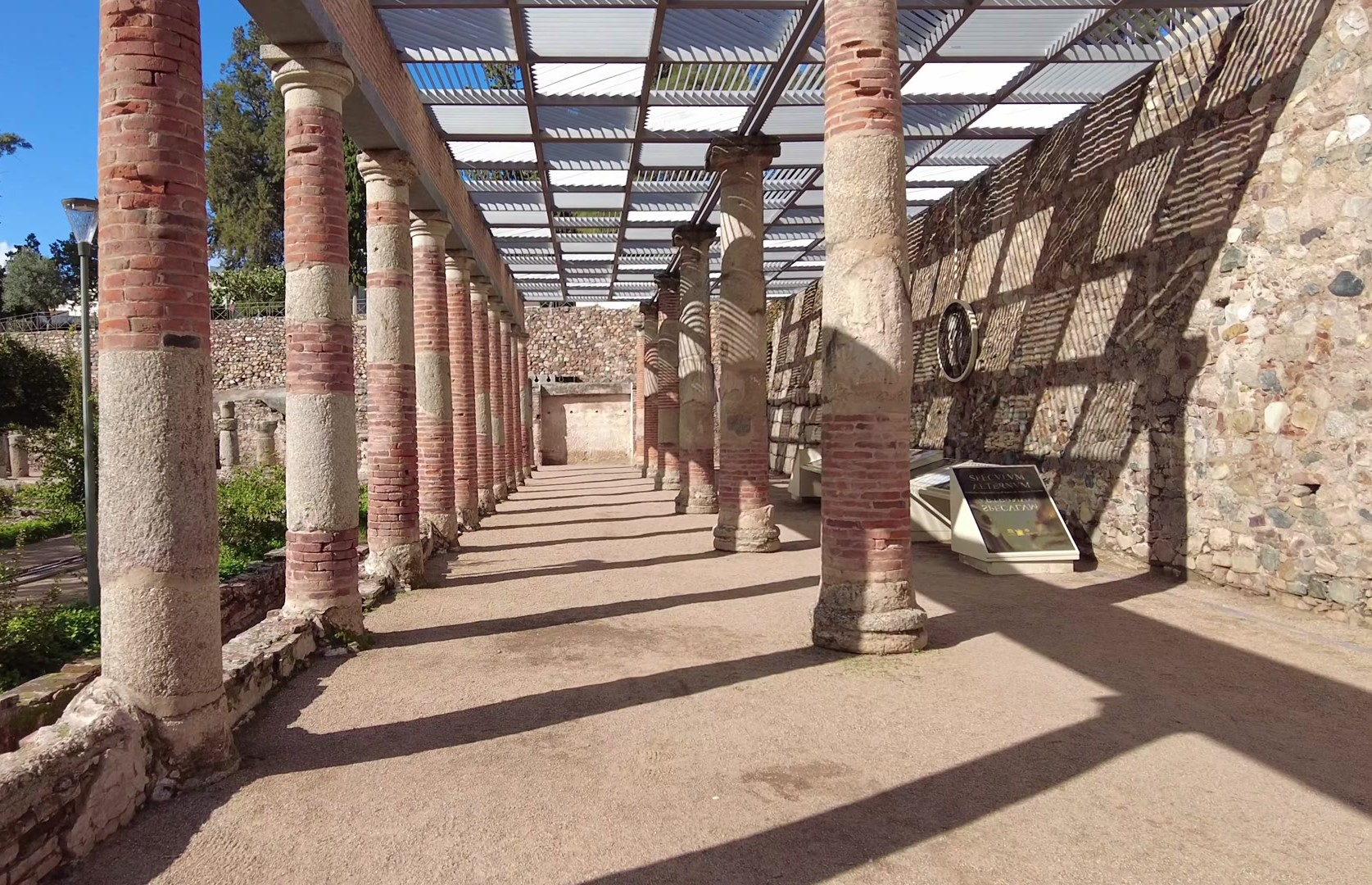
Around the theater it is possible to see remnants of concrete prototypes from the Roman period. This building material shows the advanced level of Roman engineering. And a structure near the theater, known as the circus, is a rare example from the Roman period. However, this circus is not like modern circuses. It was used for races and shows, not acrobats or clowns. Frescoes depicting some scenes or decorative patterns have been found on the circus walls, showcasing the richness and detail of Roman art.
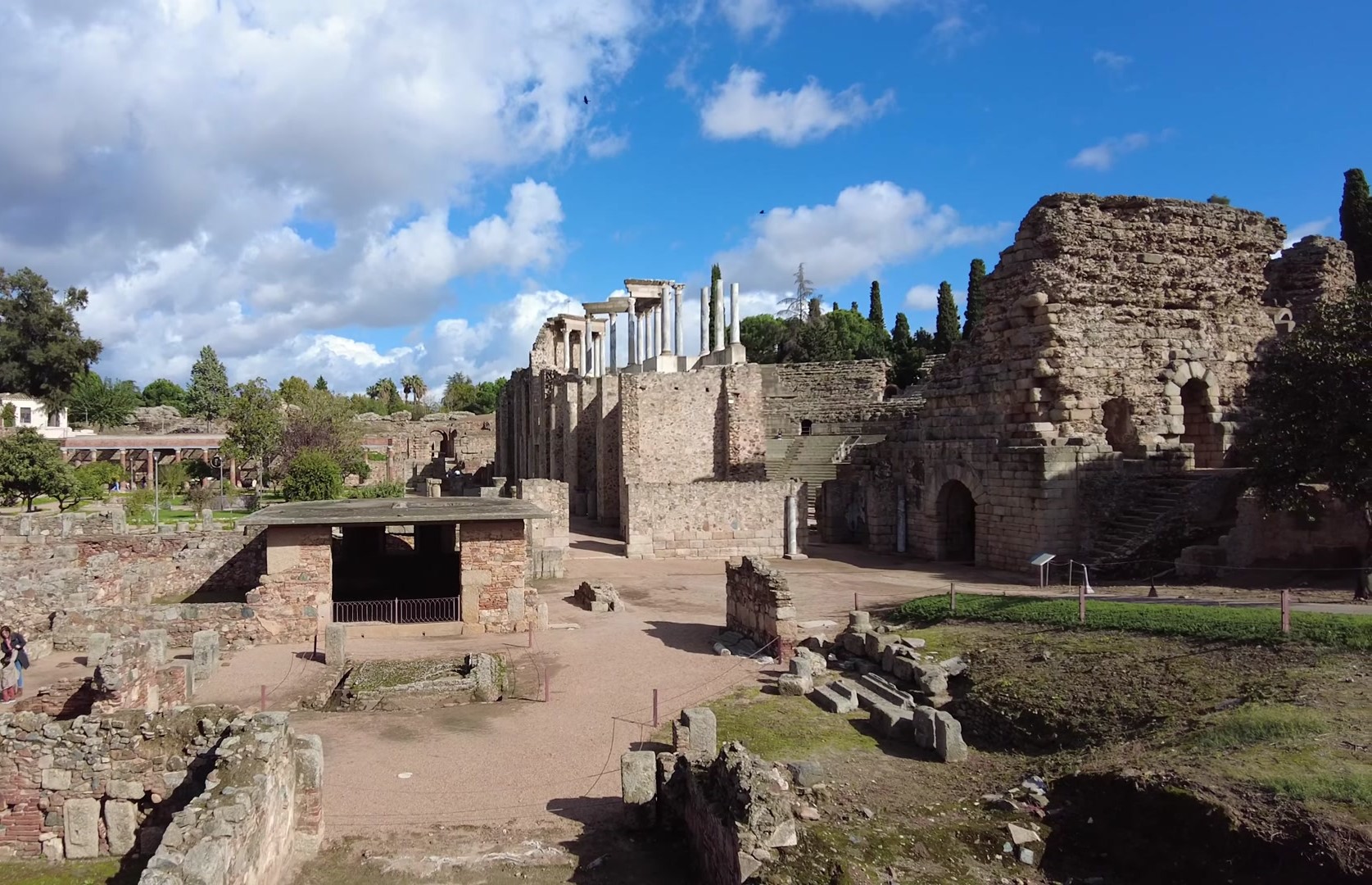

That's all for today, friends. I'll continue sharing more about what we saw on the second day of our Mérida trip in another post. See you 🤗
You can check out this post and your own profile on the map. Be part of the Worldmappin Community and join our Discord Channel to get in touch with other travelers, ask questions or just be updated on our latest features.
Travel Digest #2416.
Become part of our travel community:
- Join our Discord
Hiya, @lizanomadsoul here, just swinging by to let you know that this post made it into our Honorable Mentions in Your post has been manually curated by the @worldmappin team. If you like what we're doing, please drop by to check out all the rest of today's great posts and consider supporting other authors like yourself and us so we can keep the project going!Thank you 😍
Keep up the great work 💪 Merry Christmas 🌲☀️
Congratulations @larissalugo! You have completed the following achievement on the Hive blockchain And have been rewarded with New badge(s)
Your next target is to reach 300 comments.
You can view your badges on your board and compare yourself to others in the Ranking
If you no longer want to receive notifications, reply to this comment with the word
STOPCongratulations @larissalugo!
You raised your level and are now a Minnow!